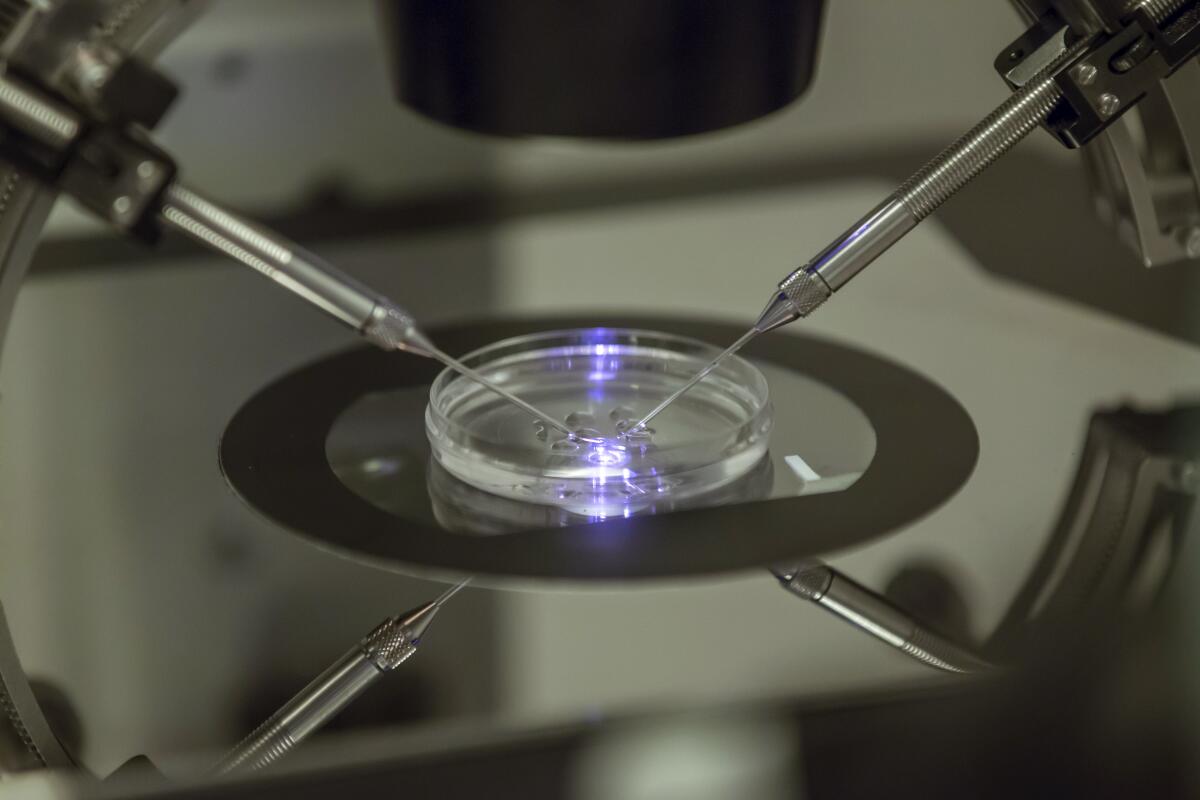U.S. twin births, long on the upswing, hit lowest level in a decade

- Share via
Fewer U.S. families are seeing double, according to a government report that finds a decline in new twins.
Twin births steadily increased for more than three decades, driven largely by older white moms undergoing fertility treatments.
But the rate of twin births apparently peaked in 2014 and has fallen 4% since. Last year, the rate hit its lowest point in a decade, the Centers for Disease Control and Prevention reported Thursday.
The drop is modest, but health officials say it’s good news. Pregnancy with more than one raises the risks of complications and death for both the mother and her fetuses. Complications include premature birth and a low birth weight.
“In the media, there are often stories about very cute twins and talking about how great to have two babies at the same time,” said Dr. Dmitry Kissin of the CDC’s Division of Reproductive Health, who was not involved with the report. But “these stories don’t focus on the risk.”
Last year, about 124,000 babies were twins — about 1 of every 31 births, the same as a decade earlier. The rate peaked at 1 in 29 in 2014.
The CDC did not release figures on triplets or other multiple births, but said data suggest it’s trending the same way.
Experts can’t say with certainty what’s behind the decline. But report lead author Joyce Martin of the CDC’s National Center for Health Statistics noted the decrease occurred only in white women and in women 30 or older. Such women are the biggest customers of expensive in vitro fertilization treatments, which are involved in roughly 15% of multiple births. And there’s been a shift in how that technique is done.
In vitro fertilization involves surgically removing eggs from a woman’s ovaries, combining them with sperm in the laboratory, and transferring the days-old embryo to the woman’s uterus. More than a decade ago, it was standard to implant two or more embryos to improve the chances of success. But that also greatly increased the odds of more than one baby.
Since then, there have been advances in growing embryos longer in the lab and testing them for genetic problems. That’s allowed doctors to select the best single embryo to use, said Dr. Aaron Styer, an infertility treatment specialist in Chestnut Hill, Mass.
The success rate for one embryo rose from about 20% in the 1980s to around 50% today, he said. Meanwhile, insurers and medical organizations increasingly have been pushing doctors to transfer single embryos more often.
Patients have bought into it. They understand that’s the ideal pregnancy, Styer said.
Today, about two-thirds of IVF procedures use one embryo, according to the CDC’s Kissin.






